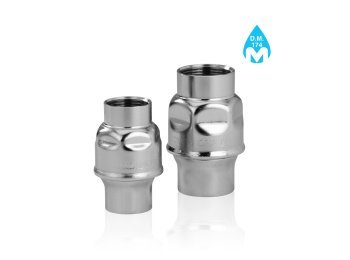Dark water and clear water: which pump to choose?
When talking about electric pumps, a common distinction is between pumps for clear water and pumps for dark water.
This classification refers to the type of liquid that needs to be lifted or moved, which is one of the key criteria for selecting a hydraulic pump. Depending on the nature of the liquid, it is important to identify the most suitable electric pump, built to operate in specific conditions, ensuring reliability and performance.
The difference between clear and dark water and why different pumps are needed.
Clear water is clean, transparent water, or water with few small residuals. This includes water from the water supply network, well water, rainwater, and swimming pool water. Dark water, on the other hand, refers to dirty water, muddy water with debris and solid particles in suspension. These include wastewater, sewage, and water from construction excavation sites.The characteristics of the fluid are naturally linked to the different applications of electric pumps. Pumps for clear water include those pumps used for irrigation, water extraction from wells and tanks, water distribution, and pool recirculation.
Pumps for dark water, on the other hand, are used for lifting sewage from pits and tanks, draining flooded areas, ponds, and construction sites. Whether surface pumps, submersible pumps, or drainage pumps are involved, it is important to consider the distinction between clear and dark water because the construction features must allow the electric pump to tolerate the degree of dirt and residue in the fluid.

A look inside the pump: what makes the product suitable for dark water.
To move dirty water, it is preferable to opt for robust electric pumps, made from corrosion-resistant materials. However, the most important element to consider is the debris, which must be carefully evaluated in terms of both nature and size. The pump must be able to draw these elements and allow their passage without risking blockage. It is essential to know the diameter of the debris and the type of fibers, long or short, contained in the liquid being pumped.
Regarding the pump's hydraulics, the vortex impeller is the most suitable for dark water. The vortex impeller is named because its centrifugal motion creates a vortex that prevents contact with filamentous and fibrous elements. Additionally, being mounted in a recessed position, at the highest point of the pump's discharge body, the vortex impeller ensures a wide free passage for solid bodies in the fluid. The "free passage" is always indicated for dirty water pumps, as it refers to the maximum diameter of solid objects that can pass through the impeller and the pump's discharge.
The efficiency loss experienced with a vortex impeller compared to other types of impellers is more than compensated by its reliability, as it prevents clogging and operational blockages.
In residential applications, an alternative can be the grinder impeller, but for heavily loaded liquids, the vortex impeller remains the first choice.
Not just pumps… here are the most suitable valves for dark water.
In treatment plants, sewer systems, and wherever wastewater, loaded and muddy, is moved, the most suitable valves are knife gate valves and ball check valves.A knife gate valve is a shut-off valve that requires little maintenance thanks to its self-cleaning effect, which prevents debris buildup.
It works like a guillotine: lowering or raising the gate closes or opens the valve.
The same simple construction is found in the ball valve. In this case, the device's ability to prevent fluid backflow comes from the free movement of a metal ball inside the valve body. The upstream fluid pressure pushes the ball into a position that does not obstruct flow, allowing full passage; in the event of overload, the ball returns to its original position, blocking the flow. The self-cleaning process that occurs within the valve minimizes maintenance.
























